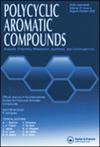Single Crystal XRD, Hirshfeld Surface, Quantum Chemical and Molecular Docking Studies on Diethyl1-(4-Nitrobenzyl)-4-(4-Nitrophenyl)-2,2-Dioxooctahydro-2-Pyrrolo[2,1-c]1,2Thiazine-1,3-Dicarboxylate: a Novel HIV-1Inhibitor
Abstract
The single crystal of the title compound Diethyl 1-(4-nitrobenzyl)-4-(4-nitrophenyl)-2,2-dioxooctahydro-2-pyrrolo[2,1-c]1,4thiazine-1,3-dicarboxylate was grown and characterized by single crystal X-ray diffraction technique. Further, Hirshfeld surface, quantum chemical, and molecular docking analyses of the compound were carried out. The title compound was crystallized in a triclinic crystal system with a centrosymmetric space group of P-1 and has one molecule in the asymmetric unit. The stability of the grown crystal structure was confirmed by the C-H…O and π…π interactions. The hydrogen bonding features were analyzed and the prominent intermolecular interactions present in the structure were investigated using Hirshfeld surface analysis. The interaction energy between pairs of the molecule was obtained from Energy Framework analysis. The molecular structure of the title compound was optimized using density functional theory calculation in the ground state and the calculated structural parameters of the compound were compared with the experimental XRD data. Mulliken atomic charge distribution and frontier molecular orbitals analyses were also carried out to validate the reactivity of the title molecule. Molecular docking studies confirm that the title compound has potent inhibitory nature against the human mutant HIV-1 reverse transcriptase protein. Thus, the present study paves the way for the development of a novel HIV-1 drug.

 求助内容:
求助内容: 应助结果提醒方式:
应助结果提醒方式:


